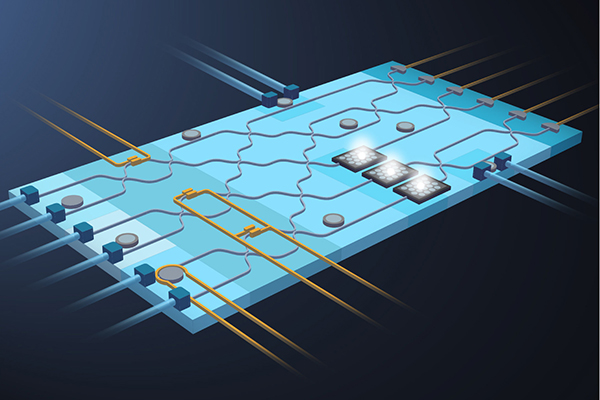A survey by International Telecommunication Union stated that the worldwide percentage of young people (15–24) accessing the internet is 70%. It is 90% in developed nations for the same age group. Over the past six years, the number of mobile broadband subscriptions has increased at an average annual growth rate of more than 20%. It reached 4.3 billion by the end of 2017. The main reason for the massive demand for mobile broadband services is cost-effectiveness. The demand for high-speed internet connectivity is driven by increased government expenditure on digitization, decline in smartphone prices, and enhanced tele density. This demand is anticipated to impact the need for high bandwidth data. This fuels the globally integrated quantum optical circuits market expansion.
According to Allied Market Research, the global integrated quantum optical circuits market is expected to showcase a noteworthy CAGR from 2022 to 2031. Integrated quantum optical circuits are in high demand in the telecommunication sector due to massive investments being made. Integrated quantum optical circuits support optical scalability and miniaturization of optical quantum circuits. Organic growth strategies like product launches, product approvals, patents, and events are implemented by key market players to expand their product portfolio and market base.
For example, in September 2021, for operational purposes in the regional, metro, and long-haul ROADM-based optical networks, NeoPhotonics announced the release of a 400 G Multi-Rate CFP2-DCO coherent plug-in transceiver, its highest output power version. Also, it comes with a production capacity of 0 dBm. It is built on NeoPhotonics’ vertically unified IPS (Indium Phosphide software system). It includes an ultra-pure Nano tractable laser as well as ICR (Coherent Receiver). Additionally, a class 40 CDM (Coherent Driver Modulator).
Acquisitions, Partnerships, and Collaborations:
These companies also focus on inorganic growth strategies such as acquisitions, partnerships, and collaborations. For example, in February 2022, a significant producer of analog semiconductor solutions, Tower Semiconductor, was successfully acquired by Intel Corporation. The acquisition is expected to expedite its progress toward becoming a powerful global provider of foundry services and capacity. Jabil Photonics and EFFECT Photonics announced a collaboration to develop a new range of coherent optical modules. The modules offer a specific solution for network operators and hyperscalers. The ability to handle the increased demand for data flow, service continuity, security issues, worldwide expansion, and sustainability makes it different from other optical modules.
In March 2022, partnership between Skorpios Technologies Inc. and ColorChip Group used Skorpio’s optical technology to develop optical modules. At various speeds and performance levels, ColorChip offered its own company of modules for Skorpios to market. In collaboration, they will manufacture some advanced products like Co-packaged optics and Coherent Modules. In September 2022, IBM and IIT Madras jointly announced a partnership to advance national quantum computing expertise and research. With this partnership, IBM has joined almost 180 members toward quantum computing evolution.
COVID-19 impact on the integrated quantum optical circuits market:
The pandemic outbreak resulted in several travel restrictions, which in turn caused the closure of production facilities worldwide. Manufacturing facilities in the sector were briefly shut down as a result of the global lockdown’s implementation, a lack of skilled labor, a hampered global supply chain, and a scarcity of raw materials. However, market participants are implementing various quick response strategies to stabilize the supply chain and guarantee abundant raw material availability and seamless distribution, which has increased demand for these items once again, assisting the market to recover quickly.















